Scaphoid Fracture
What is a Scaphoid Fracture?
The scaphoid is one of the eight carpal bones which form the wrist. It is located on the radial side of the wrist, under the thumb. The name scaphoid is derived from Greek, and means bowl or boat, which is an apt description of its shape. Anatomically, the scaphoid is divided into thirds: the proximal third being closest to the radius of the forearm, the middle forms the neck, and the distal third articulating with other carpal bones of the wrist. The blood supply of the entire scaphoid is derived from vessels entering the distal portion of the bone. If that supply is cut off by a fracture in the neck or proximal third of the scaphoid, the entire bone is in jeopardy, as the bone will not receive the nourishment it needs to repair itself.
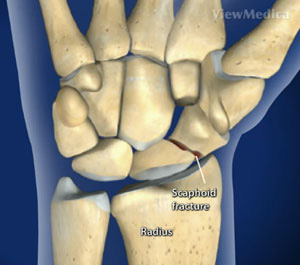
What causes a Scaphoid Fracture?
Scaphoid fractures are caused by a fall onto an outstretched hand where the force is concentrated on the thumb, or radial side of the hand. These forces can also be replicated in an athletic injury or due to trauma sustained in an automobile accident.
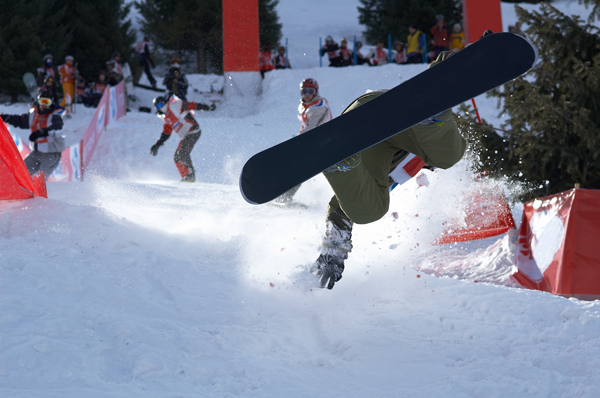
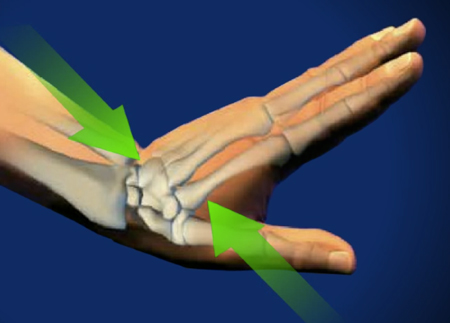
What are the symptoms of a Scaphoid Fracture?
The hallmark symptom of a scaphoid fracture is known as “snuffbox” tenderness. The snuffbox, also known as the radial fossa, is located by making a thumbs up sign. The depression in the skin that occurs at the wrist below the thumb is the snuffbox. A scaphoid fracture will result in pain, tenderness, swelling, and bruising centered around this location. Range of motion of the wrist may be slightly decreased.
How is a Scaphoid Fracture Diagnosed?
Scaphoid fractures are commonly misdiagnosed as wrist sprains. Indeed, the symptoms are similar, and the pain and tenderness associated with a scaphoid fracture can be subtle. Oftentimes, the patient who has sustained a scaphoid fracture attempts to self-treat at home with rest and ice, and presents for evaluation days later because the symptoms have not improved.
For those who are evaluated at the time of injury, X rays taken in the emergency department may not show a scaphoid fracture. It may take up to two weeks for a fracture line to show up on plain films, especially if the fracture is non-displaced. For this reason, anyone who has snuffbox tenderness should be assumed to have a scaphoid fracture until proven otherwise.
For the elite athlete who cannot wait two weeks to repeat X rays, an MRI can be performed to rule out a scaphoid fracture. CT is another modality used to diagnose scaphoid fracture and is optimal for determining the alignment of the scaphoid and to assess fracture healing.
How is a Scaphoid Fracture treated?
Whether casting or surgery is employed, a scaphoid fracture will take up to 10-12 weeks to fully heal in uncomplicated cases.
Non-Surgical
Non-surgical treatment is possible if the scaphoid fracture maintains proper alignment. The wrist and thumb are immobilized in a short arm thumb spica cast until the fracture is healed. Some surgeons may treat this in a cast above the elbow for the first 6 weeks followed by a short cast. If, however, after 6 weeks of casting the fracture is not healing properly, a bone stimulator may be used. This device uses electromagnetic energy to coax new bone growth. If this fails, surgery will be needed.
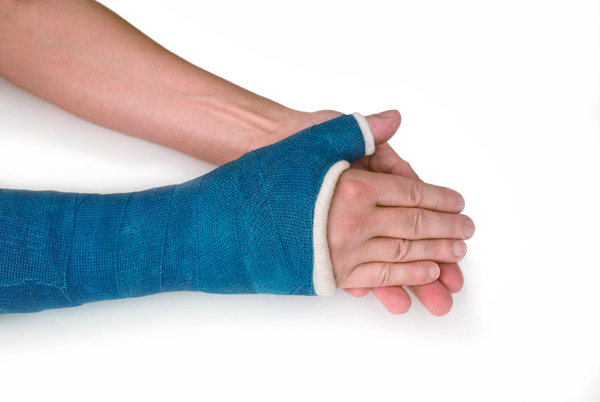
Surgical
Surgical treatment is indicated for non-displaced scaphoid fractures which have not healed after 6 weeks of splinting. It is also necessary for unstable scaphoid fractures and displaced scaphoid fractures. Screws are most often used to realign the scaphoid fragments via open reduction and internal fixation. If union of the bone is not achieved with surgery, bone grafting may be needed to heal the fracture. Frequently surgery is done to speed up the healing time such as elite athletes allowing them to return to play quicker.
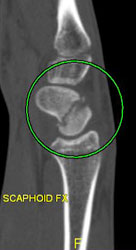
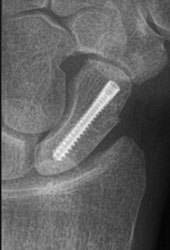
How can Dr. Knight help you with a Scaphoid fracture?
Scaphoid fractures are common, and often patients do not seek medical attention until the pain has become unbearable. Dr. Knight will quickly diagnose the problem and settle on a course of action that best fits your injury and lifestyle. He will also work quickly to avoid any complications, which may arise if the injury is left too long untreated.
Our offices are easily accessible from Dallas and Dr. Knight is considered one of the top hand doctors in Dallas, TX. Come to our Dallas office or Southlake office to see what he can do for you.
Scaphoid Fracture Fact Sheet
| What causes scaphoid fracture? | Scaphoid fractures are caused by trauma to the scaphoid bone of the wrist, usually as the result of a fall on an outstretched hand focused on the thumb side. |
| What can I do for a scaphoid fracture at home? | The scaphoid is a delicate bone with a precarious blood flow, so home treatment without the aid of a medical professional is not recommended. |
| Are there any medications that can be used to treat a scaphoid fracture? | No specific medications are indicated for the treatment of a scaphoid fracture, but anti-inflamatories may aid in healing, and painkillers can act to assuage discomfort caused by either the initial injury or the healing process. |
| What are the long term effects of a scaphoid fracture? | If not treated correctly, the blood flow of the scpahoid can be cut off completely, which will cause the bone to die, and in turn cause intense pain. In severe cases an implant for the bone may be required to restore function. |
| What methods does Dr. Knight use to treat a scaphoid fracture? | Splinting and electrostimulation can aid in speeding up the healing process if the bloodflow to the bone is steady. Surgery may be necessary in more severe cases. |
Frequently Asked Questions:
Can a scaphoid fracture heal on its own?
Due to the sensitive nature of the bone involved in this particular fracture, it cannot be left to heal on its own, and it is unadvisable to take this tack. It is important to see a doctor as soon as possible if you feel you may be suffering from a scaphoid fracture. If the condition is left untreated for too long, then the blood supply to the scaphoid bone can be compromised, which can cause the bone to die, and this leads to complications and pain and loss of motion and use in the wrist, which can have devastating effects.
How long does it take for a scaphoid fracture to heal?
All going well, from initial treatment it should take an injury to the scaphoid bone about ten-twelve weeks to heal back to full use and full range of motion. Of course, there are always complications that can arise, and many factors, including age, general health, bone health, and regular activity can also affect the speed of healing, but ten to twelve weeks is a good estimate, without any complications.
How exactly can the scaphoid bone get fractured?
Fractures to the scaphoid bone are caused by a very specific type of injury, typified by a fall onto the outstretched hand, with the wrist flexed, and the majority of the force on the radial side of the wrist. This is most commonly suffered by athletes or anyone who falls unexpectedly and tries to stop their fall with their hands, but it can also be caused by an automobile accident, where the wrists slam into the dashboard or the steering wheel, which mimics the circumstances of the fall.
Do I need surgery to repair my scaphoid fracture?
As with most fractures, surgery is always a possibility, but conservative treatment is usually effective as long as the scaphoid bone maintains proper alignment during the healing process. If the bone is set and there is no growth detected, or there are indications that the bone is dying anyway, then surgery will be necessary.
Videos
Animated Videos
Surgical Video
Note: The following video contains graphic images.
(817) 382-6789
Disclaimer
HandAndWristInstitute.com does not offer medical advice. The information presented here is offered for informational purposes only. Read Disclaimer

























